

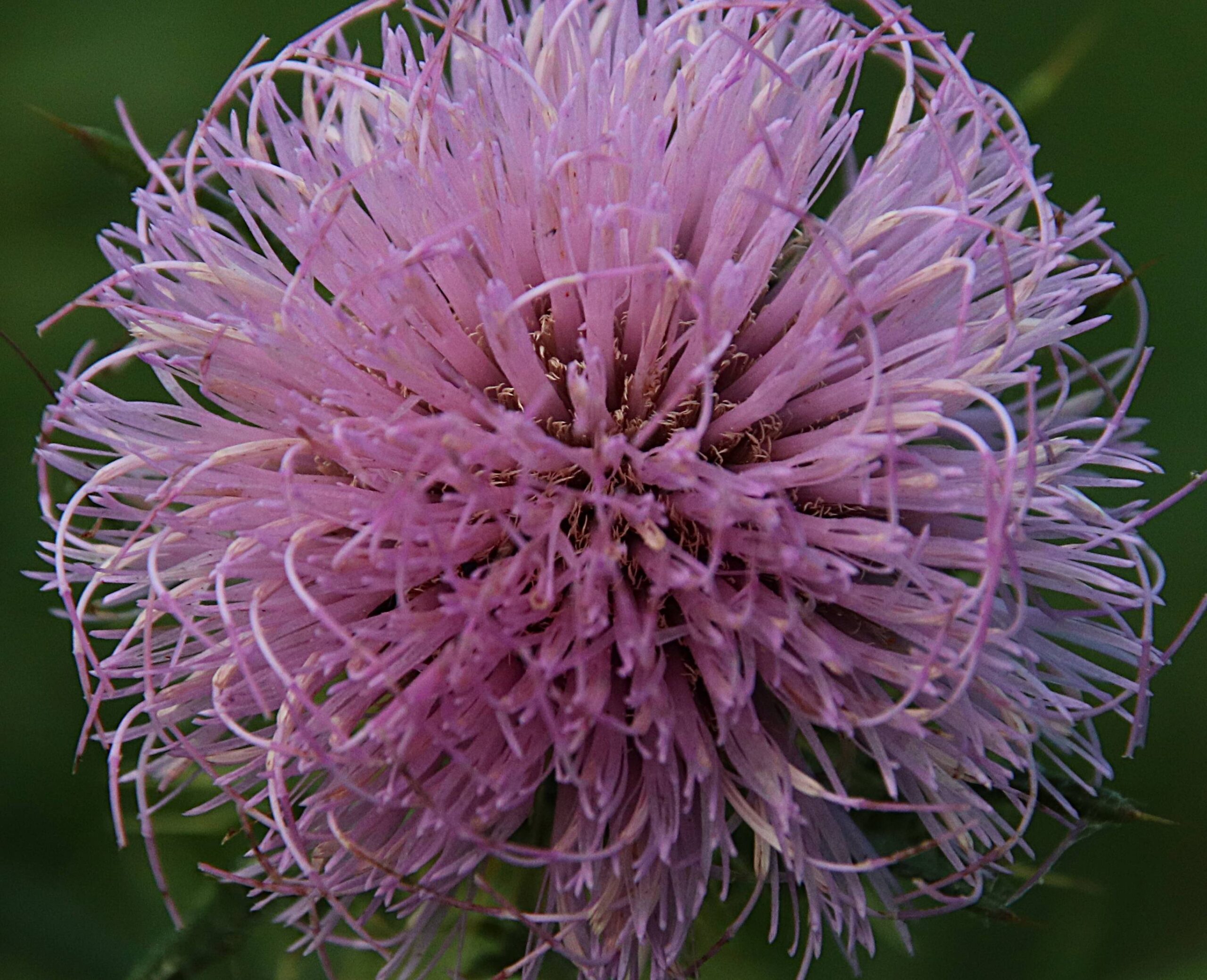
Nonpartisan and Education-based News for Centreville


The Spy Newspapers may periodically employ the assistance of artificial intelligence (AI) to enhance the clarity and accuracy of our content.
Ciao Tutti!
This weekend at Piazza Italian Market, we will taste the Aglianco Del Vulture DOC 2021, $25.99, 13% ABV), from the Casa Vinicola D’Angelo Winery near Potenza, Basilicata’s capital. Basilicata is Italy’s third least populated area and is located between the toe and heel of Italy’s boot, along the shoreline of the Gulf of Taranto. Casa Vinicola D’Angelo is in the heart of the Aglianco del Vulture production area that takes its name from Mount Vulture, an extinct volcano whose two craters now hold two beautiful lakes. The volcano and its area were named “Vulture” since from the air, the shape of the area resembles that scavenger bird.

For over a century, the D’Angelo name has been synonomous with Aglianico del Vulture wine. The son of the founder, Rocco D’Angelo Sr., became the most active promoter of all wines from the Vulture area and in 1980 his son Lucio D’Angelo took over management of the estate. Lucio’s children Rocco and Erminia played hide and seek in the vineyards and today, Rocco is the winemaker and Erminia, along with their mother Franca, manage the vineyard’s operations. Their portfolio now contains fourteen red, white, rose’ and sparkling wines, plus two grappas.

The unique soils of the Vulture production area are due to the volcano’s ashes, lava and stones, resulting in very fertile soil that is spongier than elsewhere in the region. Lush forests of oaks, beech, chestnut and oak trees surround the volcano’s slopes. The trees have a crucial role in both capturing the moisture and also regulating the micro-climate. The groundwater has also been affected by the soil, resulting in several mineral springs that have become tourist attractions.

The Aglianico grape is one of Italy’s oldest grapes and its origin was Ancient Greece. Its Greek name was “Ellanico”, but when the Spanish Bourbons conquered southern Italy, the name became “Aglianico”. Wine writer Ian D’Agata believes Aglianico is ranked up with Nebbiolo and Sangiovese and another writer calls it the “Barolo of the South”, due to its floral notes, full flavor of black cherry and spiced plum fruits and volcanic smokiness.
Pair with rich, savory, high fat meats like grilled steak with roasted mushrooms, or barbeque ribs, pasta with meaty ragu or Piazza’s sharp, hard cheeses like Pecorino or Asiago. If you have not yet tasted this grape, come join me Friday from noon or Saturday from noon to 4:45.
Cin Cin!
Jenn
Contributor Jennifer Martella has pursued dual careers in architecture and real estate since she moved to the Eastern Shore in 2004. She has reestablished her architectural practice for residential and commercial projects and is a real estate agent for Meredith Fine Properties. She especially enjoys using her architectural expertise to help buyers envision how they could modify a potential property. Her Italian heritage led her to Piazza Italian Market, where she hosts wine tastings every Friday and Saturday afternoons.
The Spy Newspapers may periodically employ the assistance of artificial intelligence (AI) to enhance the clarity and accuracy of our content.
In spring, gardeners act like kids in a candy store, greedily stuffing everything we can get our hands on into the ground. Then the annual drought kicks in. For the rest of the summer, we pay for our botanical gluttony with back pain and water bills, hauling around hoses (or buckets from the rain barrels) in an effort to keep the cache alive. All this when the truth is: fall is often a better time to plant here in Maryland for a variety of reasons.
“It’s better for gardeners,” says Robin Hanway, UMD Extension Program Assistant for Kent County. Reprieved from summer’s Sarahan heat, we emerge from the AC into balmy autumn, ready for a little garden restoration, a horticultural mini makeover that benefits both the soul and the neighborhood. “Weed growth slows and there are fewer pests,” Hanway adds. So, the improvements you make now tend to last a little longer visually and require less tending.
“Cooler temperatures are [also] less stressful for plants,” Hanway notes. The hot, desiccating winds of summer have usually given way to something more temperate, so plants are able to retain more moisture. “And soil temperatures are still warm, which benefits root growth.”
The cool soil temperatures in spring, when most of us want to jump start the season (and are often too quick off the mark) can stunt growth. Low soil temperatures affect the ability of plants to uptake nutrients.
“When soil temperatures are below 45F, overall root growth is reduced, so fewer roots grow and reach nutrients,” says Jon Traunfeld, Director of the Home and
Garden Information Center at University of Maryland Extension. Whereas the warm ground in autumn encourages subterranean growth. “Trees, shrubs, and herbaceous perennials planted in September and early October typically have enough time to establish root systems and survive the winter,” he says.
Also in fall, plants aren’t trying to produce leaves and blooms, so they can devote all their energy to building those sturdy root systems.
“The plants are dropping all their leaves if they’re deciduous so they’re not supporting all the energy that goes into their leaves,” explains Michael Jensen, licensed tree expert in the State of Maryland and owner of Unity Nursery in Church Hill. In conjunction with the mention of leaf fall (which is where we get the old Anglo-Saxon term for autumn), Jensen encourages people to ‘Leave the Leaves.’ “It’s not related to fall planting” he admits, “but everyone blows the leaves away.” While clearing them off is perceived as tidy, he notes that it squanders nutrients that the tree has assiduously banked. “The tree has been taking up nutrients all season long. Then all that energy falls on the ground and releases all those nutrients back on the ground. So, if you’re blowing the leaves away, you’re removing all the [free] nutrients, and then going and buying fertilizer.”
In addition to being economical (and training the community to view the leaf blanket as beneficial rather than messy), the fallen leaves are also critical habitat for some pollinators, who are also bird food. So, leaving leaves means less cost and labor for the gardener, more butterflies, lightning bugs, and birds for the community.
Another benefit that planting in fall offers is free water.
“There’s typically more rain, so there’s moisture,” says Jensen. “In fall planting, the water requirement is significantly reduced.” Generally, new plants need about an inch of water a week to get established, an amount that can taper in winter, but does not diminish completely. “During winter you need to water sometimes if it has been very dry.”
Planting in fall also offers plants – tree, shrub, perennial – some less obvious but no less valuable opportunities to adapt.
“Going into winter, which is a nice rest period with a low stress level, you’re moving plants to a new place,” says Jensen. “They’re getting settled in so they’re adjusting to the soils, their new light conditions, and all while they’re not trying to produce leaves and blooms.”
Jensen says that, depending on the weather and winter, especially now that the effects of climate change have become so apparent, he plants until the ground freezes.
Of course, some things will perform well only if they’re planted in fall. For example, early flowering perennials like Hellebore and Peony and the cool-weather bulbs, corms, and rhizomes – Daffodils, Tulips, Bearded Iris, Allium, Crocus – which won’t bloom reliably unless planted in fall.
“They need about 12 weeks of 40 degrees [F] or so to develop root systems [before they bloom],” says Jay Hutchins, general Manager of Brent and Becky’s Bulbs in Gloucester, VA. “They also take in much more food in fall than in spring.”
In addition to being easier on the gardener and many of the plants, fall planting is easier on the wallet since most garden centers discount summer-blooming perennials, shrubs, and trees at the end of the season.
“There are sale plants at the nursery to clear the way for spring inventory later and reduce maintenance requirements in winter,” Hanway notes.
Lightning bugs on Echinacea
Fall planting offers more bang for our horticultural buck and smarter-not-harder work for gardeners. When the plants we’ve put in during September, October, and sometimes November are called on to produce their spring flush of leaf and bloom several months hence, they’ve had the opportunity to build up reserves on which to draw instead of having to hit the ground running, so the speak. The visible result: plants tend to be larger, lusher, and less susceptible to drought. Win-win.
On Friday, Sept 26, noon-2pm, The Kent County Master Gardeners are holding a plant and bake sale in Chestertown’s Memorial Park. Mums, natives, indoor plants, human food(!). Stop by, pick up a snack or two and something for you or for a friend’s garden. All proceeds benefit the program, which benefits Kent County in so many ways.
Longtime journalist, essayist, and garden writer Nancy Taylor Robson is also the author of four books: Woman in The Wheelhouse; award-winning Course of the Waterman; A Love Like No Other: Abigail and John Adams, a Modern Love Story; and OK Now What? A Caregiver’s Guide to What Matters, which she wrote with Sue Collins, RN.
The Spy Newspapers may periodically employ the assistance of artificial intelligence (AI) to enhance the clarity and accuracy of our content.
Happy Mystery Monday! Can you guess what is pictured in photo #1?
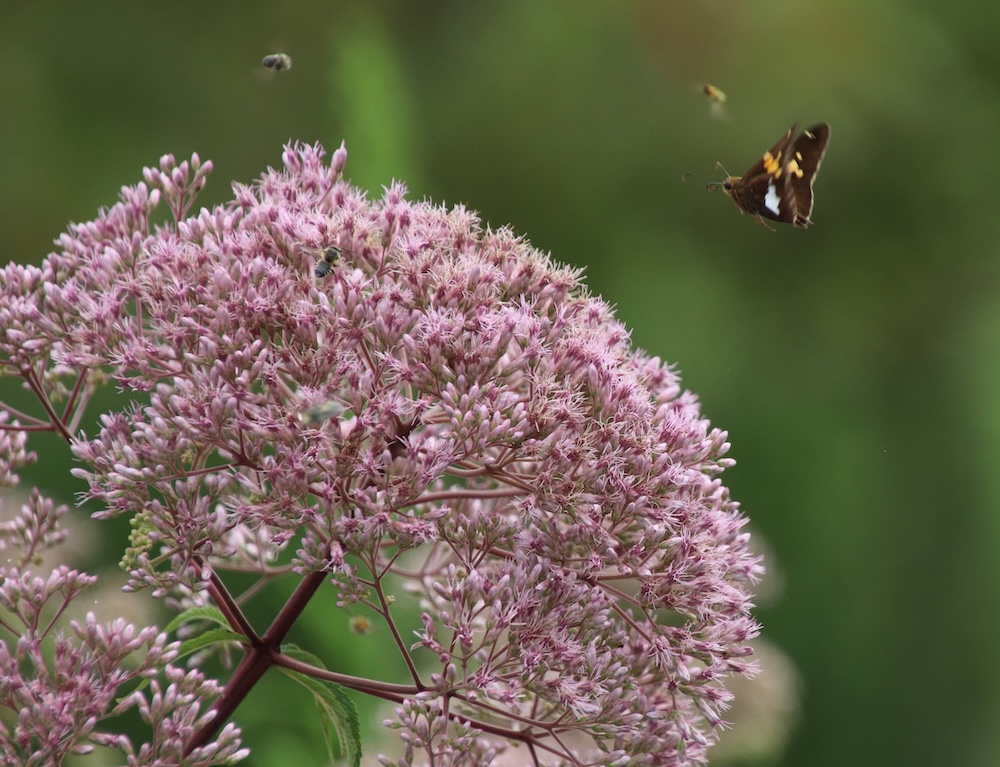
The answer to last week’s mystery is gold-marked thread-waisted wasp, Eremnophila aureonotata, pictured in photo #2.

The gold-marked thread-waisted wasp, Eremnophila aureonotata, is native to North America, ranging from southern Canada into Mexico. Despite their fierce appearance, these wasps are not aggressive and rarely sting humans.
They’re easy to recognize by their extremely thin, stalk-like abdomen, which helps the female maneuver when laying eggs or fending off predators. Solitary by nature, they sometimes appear in pairs during mating, with the male clinging to the female’s back as they fly from flower to flower. They are frequent visitors to goldenrods, spotted horsemint, boneset, and other Summer-blooming asters, playing an important role as pollinators.
Females dig nests in sandy soil, then paralyze large moth caterpillars and drag them back as food for their young. Once the nest is stocked with live food, she seals the entrance and covers it with bits of twigs, leaves, and small stones to better conceal it. The developing wasp larva inside will feed on the provided caterpillar until emerging as adults the following year.
Mystery Monday is sponsored by the Spy Newspapers and Adkins Arboretum.
The Spy Newspapers may periodically employ the assistance of artificial intelligence (AI) to enhance the clarity and accuracy of our content.
Happy Mystery Monday! Can you guess what is pictured in photo #1?

The answer to last week’s mystery is the passion flower, Passiflora incarnata, pictured in photo #2.

The passion flower, Passiflora incarnata, also known as maypop or purple passionflower, is a perennial vine native to the southeastern United States.
Its striking blooms feature five stamens, a pistil of three styles and stigmas, and a dramatic corona of filaments. These flowers are irresistible to butterflies, bees, and hummingbirds. Large bees such as the eastern carpenter bee are especially effective pollinators – the anthers are perfectly positioned to brush pollen onto a bee’s back as it rummages for nectar. The flower’s intricate structure once inspired symbolic links to the Christian crucifixion story, giving it the name “Passion.”
Despite its tropical appearance, this hardy plant can withstand temperatures as low as 0°F. Maypop vines can grow more than 20′ long and spread readily by root suckers in sandy or clayey soils where there is abundant sunlight. Their edible fruits – large, orange-yellow berries that “pop” when crushed – can be eaten fresh or used for juice and jelly. Passion flowers are also vital larval hosts for butterflies, including the Gulf fritillary, zebra longwing, Red-banded hairstreak, and Julia butterfly.
Mystery Monday is sponsored by the Spy Newspapers and Adkins Arboretum.
The Spy Newspapers may periodically employ the assistance of artificial intelligence (AI) to enhance the clarity and accuracy of our content.
Happy Mystery Monday! Can you guess what is pictured in photo #1?
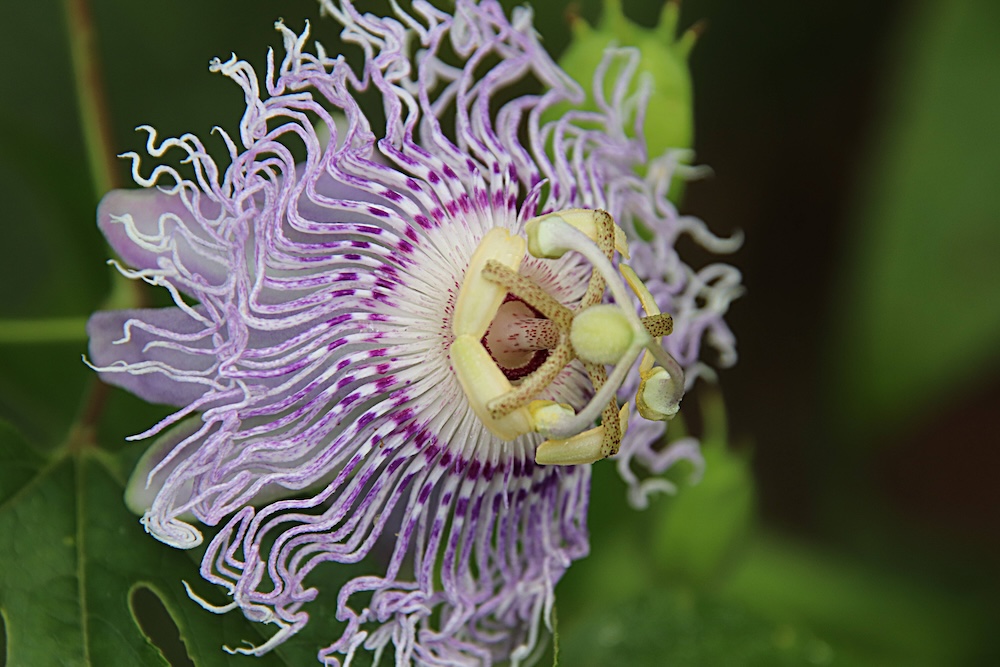
The answer to last week’s mystery is goldenrod, Solidago, pictured in photo #2.

Goldenrods are herbaceous perennials belonging to the Asteraceae, or aster, family. There are 75 species of goldenrod native to the United States. They range in hight from under a foot to more than 6′.
Goldenrods are easily recognized by their clusters of tiny, golden flowers that appear in mid to late-August and last into October. These flowers are heavy with pollen that sticks to insects, rather than disperses in the wind. Therefore, goldenrod pollen will not make you sneeze.
All goldenrods are pollinator powerhouses. They bloom in succession, supporting more butterflies and moths than any other perennial. The rapidly disappearing monarch butterfly relies on goldenrod nectar to fuel their long Fall migration to Mexico. Goldenrods are one of the most important late-season sources of pollen and nectar for bees who are provisioning their nests for Winter.=
Goldenrods naturalize quickly in the garden and are easy to grow in full sun and dry-medium, well-drained soil. They have a deep, fibrous root system, and can help prevent soil erosion and improve soil structure.
Mystery Monday is sponsored by the Spy Newspapers and Adkins Arboretum.
The Spy Newspapers may periodically employ the assistance of artificial intelligence (AI) to enhance the clarity and accuracy of our content.


The Spy Newspapers may periodically employ the assistance of artificial intelligence (AI) to enhance the clarity and accuracy of our content.


The Spy Newspapers may periodically employ the assistance of artificial intelligence (AI) to enhance the clarity and accuracy of our content.

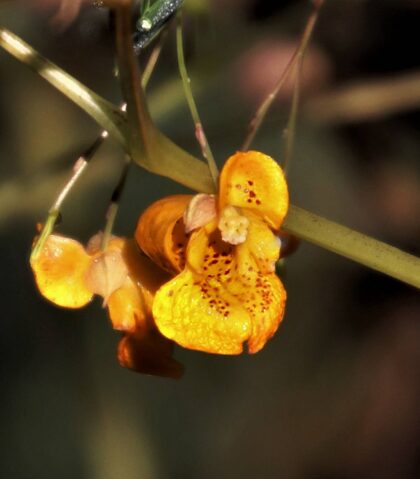
The Spy Newspapers may periodically employ the assistance of artificial intelligence (AI) to enhance the clarity and accuracy of our content.
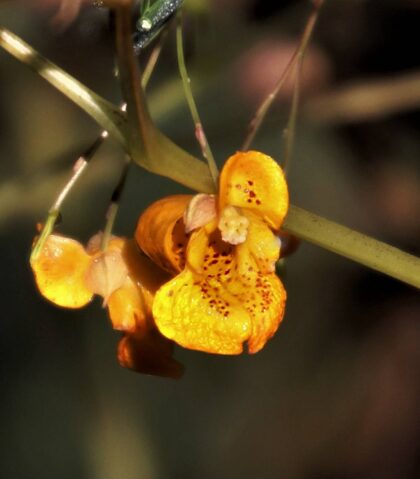

The Spy Newspapers may periodically employ the assistance of artificial intelligence (AI) to enhance the clarity and accuracy of our content.